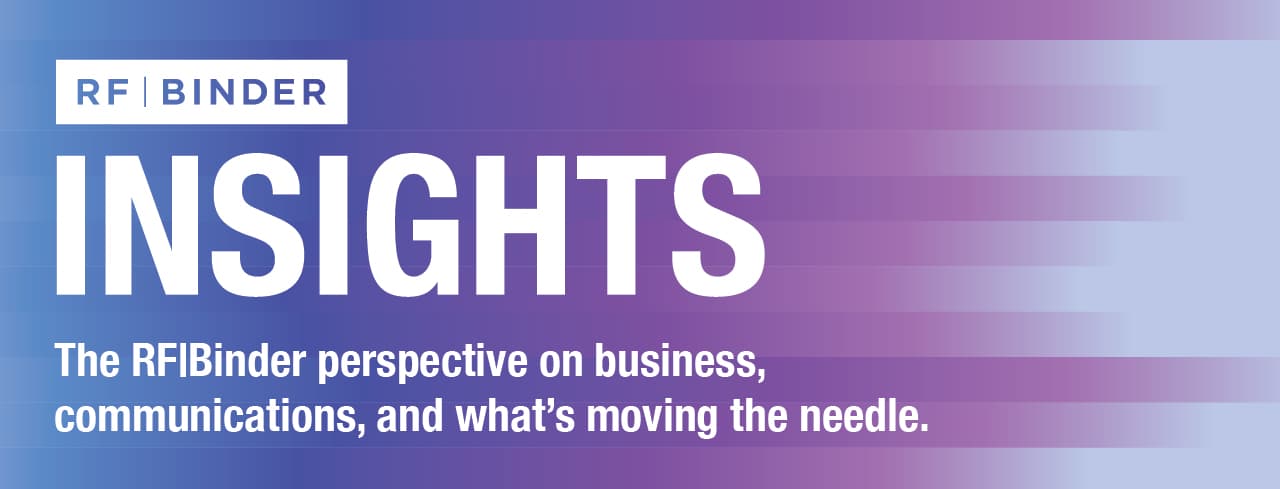In January, RF|Binder published research underscoring the value of clarity in communications. Evaluating 100 well-known companies across 13 business sectors, we found that clarity of communications directly correlates with growth and effective engagement with stakeholders. Our research found that most companies do an admirable job of delivering communications that are simple, accessible, and aligned with business goals, but far fewer are meaningfully connecting with their target audiences.
Now – four months later – we have entered a period of turmoil that is presenting a challenge to business leaders’ ability to sustain or strengthen the clarity of their communications strategy. Although achieving clarity is more challenging during periods of extreme uncertainty, maintaining strong connections with key stakeholders becomes even more essential.
In recent days, stakeholders are trying to figure out what the upheaval in global trade will mean for their company. Headlines are filled with speculation about recession and inflation risks. Compounding the uncertainty are changes in the regulatory and legal environment in many business sectors.
As a result, business leaders find themselves being pressed to make decisions or forecasts in the fog of an emerging trade war and ever-shifting policies that deeply impact their businesses. This pressure persists even though the impact on the economy is far from clear, as is the direction of future policies.
Past unsettled periods – such as the pandemic five years ago – suggest four lessons about clarity and communications in turbulent conditions:
- In times of heightened anxiety, companies must elevate the clarity and consistency of their communications. Clearer, more frequent updates can help prevent misinformation, ease unnecessary fears, and minimize overreactions among employees, customers, shareholders, and other critical stakeholders.
- In challenging times, sustaining clarity means being honest about uncertainty. Volatile periods naturally bring more questions than answers. Business communicators should avoid being drawn into making speculative responses or commenting on those made by others. It is important to focus on providing as much fact-based information as possible. This will reinforce trust.
- Changes in communications strategies, core narrative or messaging should be based on data about key stakeholder groups’ perceptions and attitudes. Well-crafted narratives that are aligned with business strategy typically remain effective even in turbulent times. While events may call for refinements across different channels, communicators should avoid abrupt or frequent changes that could undermine the company’s strategic clarity and focus.
- Monitoring and tracking social media as well as news outlets is essential to alert communicators to misinformation or misguided comments or criticisms. Such monitoring is always useful, but in periods of volatile developments, fringe ideas or ill-informed comments have a greater tendency to go viral and even be reported by established media. The sooner these issues are identified, the easier it is to address them if needed.
In moments of uncertainty, clarity isn’t a luxury – it is a leadership imperative. The most effective communicators aren’t those who claim to have all the answers, but those who can navigate complexity with honesty, consistency, and purpose. By staying grounded in strategy and attuned to stakeholders, companies can not only weather turbulent times, but emerge stronger, with trust intact and reputation enhanced when the dust settles.
For more on our perspectives on communicating with clarity, please click here.

